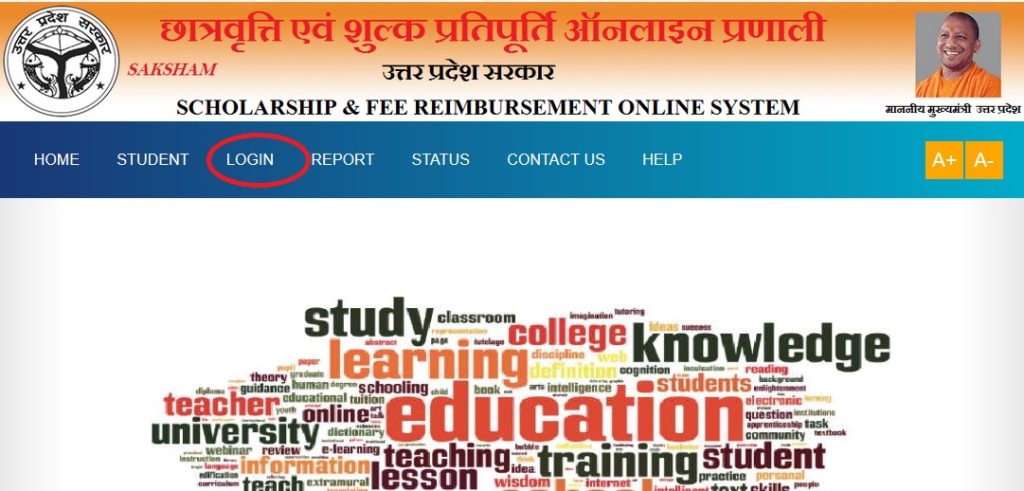Cache:http://scholarship.up.nic.in/. In today’s fast-paced digital world, where information is just a click away, the speed at which websites load plays a crucial role in user satisfaction. Slow-loading web pages can frustrate users and lead to a higher bounce rate. This is where caching comes into play, and in this comprehensive article, we’ll explore the concept of caching in-depth by focusing on “cache:http://scholarship.up.nic.in/.”
Introduction to Caching
Caching is a fundamental concept in the realm of web development, playing a pivotal role in enhancing website performance. At its core, caching involves the process of storing and subsequently retrieving data to expedite future requests. It’s like having a handy shortcut to access frequently used information, resulting in faster load times for web pages.
What is “cache:http://scholarship.up.nic.in/”?
“cache:http://scholarship.up.nic.in/” represents a specific instance of caching related to a website. To gain a deeper understanding of this, let’s dive into the different types of caching.
Types of Caching

1. Browser Caching
Browser caching is a mechanism that operates on the user’s device. When a user visits a website, their web browser diligently stores certain files locally. These files can encompass anything from images and stylesheets to JavaScript files. The next time the user revisits the same website, their browser can retrieve these files from its local cache, sparing them the time and bandwidth required to download the same data again.
2. Server-Side Caching
In contrast, server-side caching occurs on the web server itself. This involves storing pre-generated HTML pages or dynamic content in a cache. When a user requests a particular page or resource, the server can serve the cached content instead of regenerating it from scratch. This method significantly reduces server load and accelerates the delivery of content to users.
Advantages of Caching
Caching offers a multitude of advantages that directly impact both website owners and users. Let’s explore these benefits in more detail:
- Faster Website Loading Times: One of the most noticeable benefits of caching is the substantial improvement in website loading times. Users experience quicker access to content, leading to enhanced user satisfaction.
- Reduced Server Load: By serving cached content, servers experience reduced workloads, allowing them to handle more user requests simultaneously without compromising on speed.
- Improved User Experience: Speedy page loading leads to a more pleasant user experience. Users are more likely to stay on and explore a website if it responds swiftly to their interactions.
- Lower Bandwidth Usage: Caching can significantly reduce the amount of data transferred between the server and the user’s device, resulting in lower bandwidth consumption.
How Does “cache:http://scholarship.up.nic.in/” Work?
To fully grasp the inner workings of “cache:http://scholarship.up.nic.in/,” it’s essential to delve into the mechanics of caching. When a user accesses this specific URL, certain data related to the scholarship website is strategically cached. This cached data is then utilized to expedite and optimize subsequent visits to the website.
Common Caching Problems
As effective as caching can be, it’s not without its challenges. Two common issues associated with caching are:
1. Cache Invalidation
Cache invalidation is the process of clearing or updating cached data when changes occur in the original data source. Without proper cache invalidation mechanisms in place, users may encounter outdated or incorrect information, which can be detrimental to user trust and experience.
2. Stale Caching
Stale caching is a situation where cached content remains valid for an extended period, even when the underlying data has changed. This can result in a mismatch between the cached content and the actual content on the website, potentially causing confusion or inaccuracies.
Importance of Caching for Website Performance
Caching holds immense importance in the realm of website performance optimization. Its benefits extend beyond mere speed improvements and encompass several critical aspects:
- Reduced Server Costs: By minimizing the need for constant data regeneration, caching reduces server operational costs.
- Enhanced Scalability: Caching enables websites to handle increased traffic without experiencing performance degradation, making it an essential component for scaling web applications.
- Positive SEO Impact: Websites that effectively implement caching tend to rank higher in search engine results. This is because search engines favor websites that offer faster loading times and improved user experiences.

Best Practices for Caching
To harness the full potential of caching, it’s essential to adhere to best practices. Let’s explore some of these practices in detail:
1. Set Proper Cache Headers
Ensure that your website sends appropriate cache headers with HTTP responses. These headers instruct both browsers and servers on how to handle caching. For example, you can specify how long cached data should be considered valid.
2. Use Content Delivery Networks (CDNs)
Content Delivery Networks (CDNs) are a powerful tool for caching and delivering web content efficiently. CDNs distribute cached content across multiple servers located strategically worldwide. This reduces latency and significantly enhances content delivery speed to users, regardless of their geographical location.
Caching and SEO
While caching itself is not a direct SEO ranking factor, its impact on website performance can have a profound influence on search engine rankings. Here’s how caching indirectly benefits SEO:
- Faster Loading Pages: Search engines consider page loading speed when determining rankings. Websites that load quickly due to efficient caching are more likely to rank higher in search results.
- Improved User Experience: Caching contributes to a smoother and more enjoyable user experience, which can lead to lower bounce rates and longer visit durations—factors that positively affect SEO rankings.
Tools for Caching Analysis
Various tools and services are available to analyze and optimize caching strategies for your website. These tools help you identify bottlenecks and implement improvements to maximize the benefits of caching.
Real-World Example: “cache:http://scholarship.up.nic.in/”
Let’s take a practical look at how caching works in the context of “cache:http://scholarship.up.nic.in/.” By caching specific elements of the scholarship website, users can access information more quickly and efficiently. This not only benefits the users but also eases the load on the website’s servers, resulting in a win-win situation.
Conclusion
In conclusion, caching is not merely a technical aspect of web development but a fundamental tool for enhancing website performance. It significantly improves website loading times, enhances user experiences, and indirectly contributes to SEO efforts. To harness the full potential of caching, it’s crucial to understand its intricacies and implement best practices. By doing so, you can create a more efficient and user-friendly website that stands out in the digital landscape.



